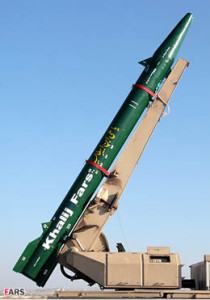
The Iranians have developed an improved model of medium-range rocket Fateh-110. The current model is held by Hezbollah in Lebanon and Israel believes that the advanced model was on its way to the missile units of the organization. The Iranians have not provided many details about this new rocket model, but experts in Israel said yesterday that Iran’s rockets and missile industry make constant efforts to improve the directive mechanism, I-HLS reports.

According to foreign sources, the attacks carried out by Israel in Syria in recent days were aimed, among other things, at the delivery of these rockets. Rockets of the Fateh-110 model remain the primary medium-range rocket power held by Hezbollah. The Rocket has a maximum range of 250 km and its warhead weighs half a ton. With such a range – this rocket threatens Israel all the way to Beer-Sheba area in the Negev. The rocket was developed by the Iranian military industry, and is launched by a launcher similar to that used by the SA-2 surface to air missile.

Fatah-110 warhead is almost double in weight than warheads that armed the Scud missiles fired at Israel during the first Gulf War. These weighed about 300 kg. The length of the rocket is about 8 meters, diameter of 61 cm and overall weighs about three tons.
According to the expert, Fateh-110 is manufactured in two versions. One with “free flight” like that of Zelzal rockets and Katyusha missiles, the second uses inertial guidance, allowing it to hit preselected targets with higher precision. Insight Note (Members Only)

Missile defense systems such as the Israel Aerospace Industries Arrow II or the American Patriot PAC-2 air defense missile from Raytheon are capable of intercepting rockets such as the Fatah-110 rocket. Future systems such as Rafael’s David’s Sling are currently in development under joint US-Israeli program designed to improve the capability to handle massive attacks by such rockets. Syria was planning to locally produce the Fateh-110 under the designation M-600. In 2010 Israeli sources reported that Syria has transfered ‘hundreds‘ such missiles to Hezbollah. Israel estimates that Iran’s weapons industry analyzed the results of Hezbollah rocket attacks on Israel during the Second Lebanon War and has improved due to several of its products, including the Fatah -110 model rocket.
Source: I-HLS – Israel’s Homeland Security Home
Below: Syrian military video depicting firing of different missiles. The M-600 is shown on the clip starting 00:20.
















